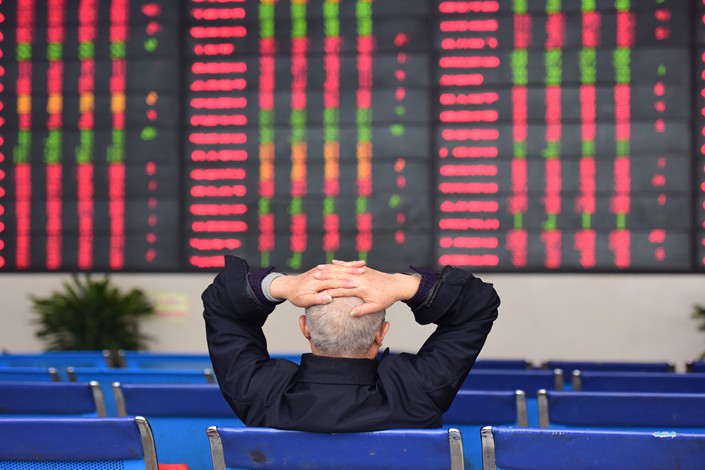China Further Relaxes Curbs on Tool for Betting Against Stocks

*The daily trading limit on stock-index futures was raised Monday, while the commission charge was lowered, in a move to improve market liquidity and lower trading costs
*During the 2015 market crash, regulators imposed a series of curbs on stock-index futures. After the market stabilized in 2017, watchdogs began to loosen the restrictions, yet investors have complained progress has been insufficient
(Beijing) — China has continued to loosen its tough restrictions on one of the few tools stock investors have to hedge their bets, in a bid to better meet their risk-management needs.
Beginning Monday (link in Chinese), the Shanghai-based China Financial Futures Exchange raised the daily trading limit on stock-index futures and lowered the commission charge and one of its margin requirements.
The measures, which aim to improve market liquidity and lower trading costs, mark China’s latest effort to further free up its stock market by loosening regulation.
Futures contracts with a stock index as the underlying asset are a key tool for investors to hedge against, or speculate on, broad price movements in the market, as indexes cover a host of different stocks.
During the 2015 market crash, regulators imposed a series of curbs on stock-index futures after blaming their use by domestic and foreign short-sellers for worsening the market decline. The restrictions quickly led to a plunge in the trading volume of the futures. After the market stabilized in 2017, watchdogs began to loosen the restrictions, with the latest move in December 2018. Yet investors have complained progress has been insufficient to allow them to make full use of the tool.
From Monday, the financial futures exchange set a new cap on an investor’s daily open positions at 500 lots per futures contract, 10 times the previous limit (link in Chinese). The cap doesn’t apply to hedging transactions, which have been under tight scrutiny.
The derivatives exchange has also lowered the commission charge for the sale of futures contracts purchased on the same day to 0.0345% of the transaction value from the previous 0.046%.
In addition, the exchange has cut the margin requirement for trading CSI 500 index futures to 12% of the contract value from the previous 15%. The margin requirements for trading CSI 300 index and SSE 50 index futures — the other two stock-index futures traded on the exchange — remain unchanged at 10%.
The exchange launched CSI 300 index futures in April 2010, and launched both CSI 500 index and SSE 50 index futures in April 2015.
The CSI 300 index tracks the 300 largest and most liquid A-share stocks in China, while the CSI 500 index consists of the largest remaining 500 stocks after excluding both the CSI 300 index components and the largest 300 stocks. The SSE 50 index consists of the 50 largest and most liquid A-share stocks listed in Shanghai.
Under current Chinese regulations (link in Chinese), overseas investors can only trade the stock-index futures through the Qualified Foreign Institutional Investor program or its yuan-denominated sibling, the Renminbi Qualified Foreign Institutional Investor program. They are only allowed to conduct hedging transactions, whose primary purpose is to avoid losses rather than acquire gains.
Contact reporter Lin Jinbing (jinbinglin@caixin.com)

- 1In Depth: China Unveils More Nuanced Economic Plan for 2026
- 2Cover Story: How China Inc. Is Discovering Its New World in Brazil
- 3CATL Tests Humanoid Robots on Battery Production Lines
- 4Hainan to Launch Closed Customs Operations for Free Trade Port
- 5In Depth: How a Chinese Mining Giant Learned to Win in Brazil
- 1Power To The People: Pintec Serves A Booming Consumer Class
- 2Largest hotel group in Europe accepts UnionPay
- 3UnionPay mobile QuickPass debuts in Hong Kong
- 4UnionPay International launches premium catering privilege U Dining Collection
- 5UnionPay International’s U Plan has covered over 1600 stores overseas






